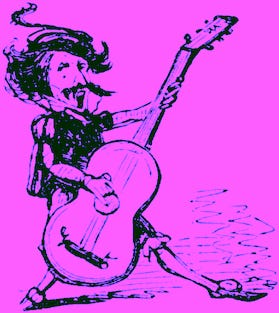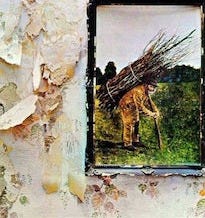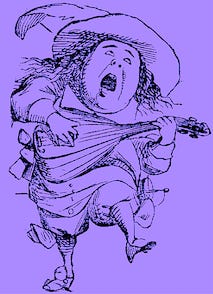There are many plateaus of ascendance in the early philosophical life of a rock guitar player.
It's a fabled journey of exploration out into the world and back into oneself, then to your girlfriend's apartment, then out into the world again, and back into oneself, then to……
Of the many gauntlets you must run, the first true challenge you must endure-
The 'Stairway Paradox'
To achieve the desired elevation in spirit and skills, the novice contemporary western guitarist must face and pass though four phases of understanding to find the path, and maybe, one day- no promises, we have your epk, don't call the receptionist- to achieve true, musical enlightenment-
Level 1- 'Stairway To Heaven' is genius.
The song is so well crafted and produced, it hits you like a movie. Every nuance is worth another listen. The first 'Holy Grail' of rock guitarists. The benchmark lick. The first validation sought in the guitar world. Inspiration for millions of players. The first, most beautiful mountain to climb. The "_____________" (insert analogy).
Level 2- 'Stairway To Heaven' is easy.
You must now learn to play the song. The mastering and memorization of it from top to bottom is an emotional, yet, athletic experience. It rewards with more control and understanding of several types of chord changes, and boosts the confidence to learn other, even harder songs.
Level 3- 'Stairway To Heaven' is mundane.
This new wealth of vocabulary inevitably leads one to spot clever as well as common, predictable, even pandering uses of various chord patterns in hundreds of songs. 'Stairway' is now seen as a chain of simple, early English folk patterns in the uncluttered key of A minor. The more difficult and complex the material the player has moved onto since learning 'Stairway', the more dramatic and harsh this assessment will be.
Level 4- 'Stairway To Heaven' is genius.
Somewhere along the way, who knows where, it pops up. Maybe you jam it at a bar with someone, and find yourself feeling kind of glowing after getting through the whole thing 'off the cuff'. Maybe you run across an old vinyl copy and put it on for grins. Maybe it just comes on the radio one day while you're in the car long enough to hear it. But that day comes, and it doesn't matter now that you can visualize all the chords as it plays. Suddenly, you hear it all again. Together, as a single personality, just like when you first met. But now, you know that personality really well, and are seeing it anew. The wooden recorders, the layering of the guitars, the rise in energy when the drums come in. You realize there's no backup vocals- just Plant's gripping storytelling with the perfect musical illustration. The beauty of the entire work is perceived, rather than the arbitrary complexity of its components.
This is the Creative Perception that allows one to envision the way of musical enlightenment. (But not volume awareness- Course II- $329.95)
This path of study has additional, and marked remedial effect on earlier, simpler lessons along the same lines, e.g. The 'Brown Eyed Girl Imperative' of 1967, the 'Monie, Monie Paradigm', and of course, the 'Sweet Home Alabama Denominator Quotient'. As you all know, the 'Free Bird Initiative' was banned in 1977 as excessive with high potential for abuse.
This may, in turn, also cause one to revisit more sophisticated hypothesis, such as 'The Dan Factor', the 'Jaco Variable' and the 'Taylor/Morrison/Simon Narrative of 1974'.
These lessons on musical metaphysics can be applied to a wide variety of disdained or tiresome request songs in all styles of music. They especially apply to hit ballads with 6 chords or less. This understanding and embracing of the song's personality allows the guitarist to establish creative 'ownership' of the song, and therefore is entitled to other usages of those progressions in their own songs and certainly some of the tip jar as well.
These teachings, and many others, are found in the 'Unwritten Handbook of Creative Perception' possibly not written originally by a student of the Buddha in the 3rd Century BCE, eventually discovered and unpublished by Marco Polo, as it presently remains. It stands to this day as possibly the largest unwritten work in history, though there's no written confirmation of that. Modern unpublications are only available in theory and discourse, and in Arkansas after 9 pm. (Not available in Arizona. Void where inhibited.)
Examples of these unspoken axioms can be found unwritten in art, films, plays, journalism, internet sites and TV shows as well as music.
Access to these unwritings is strictly through osmosis, old age, talking to old people, living really long, and, in rare cases, exposure with an open mind.
c.2012 Cousin B







